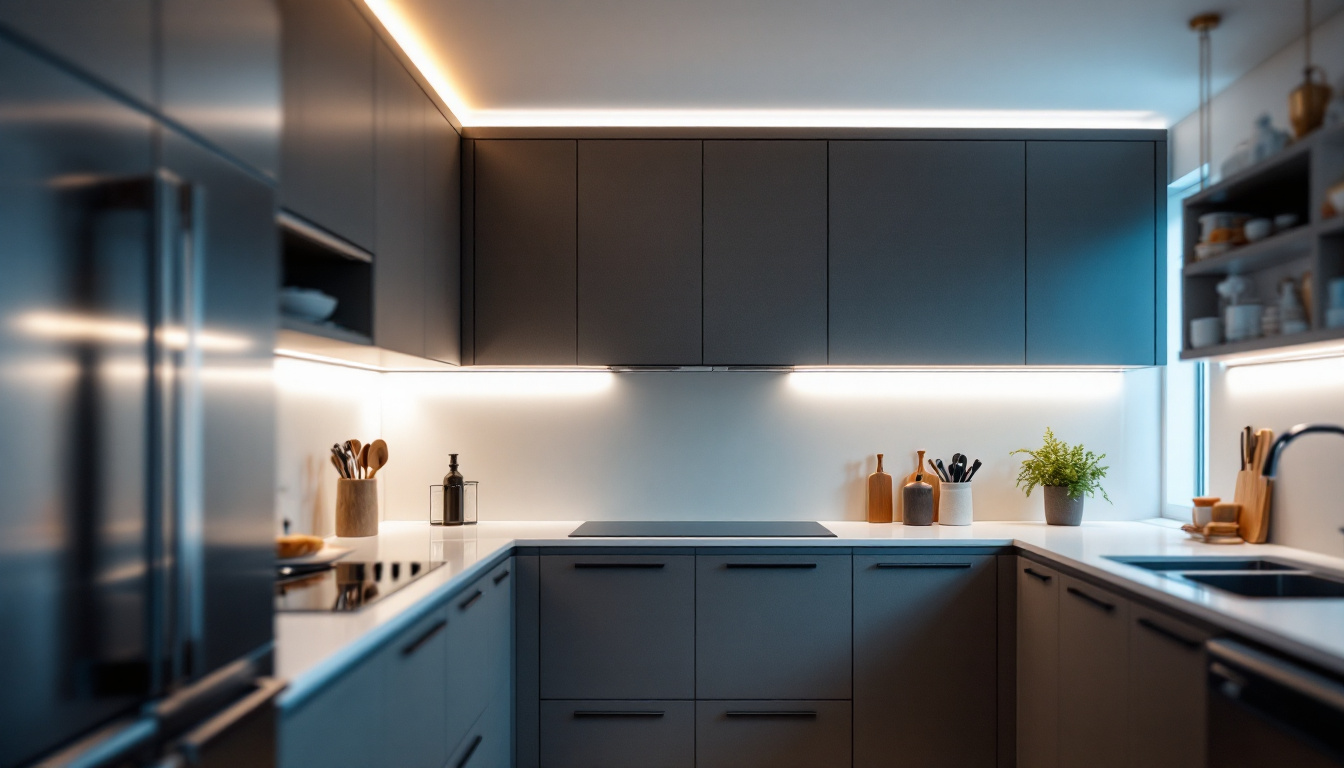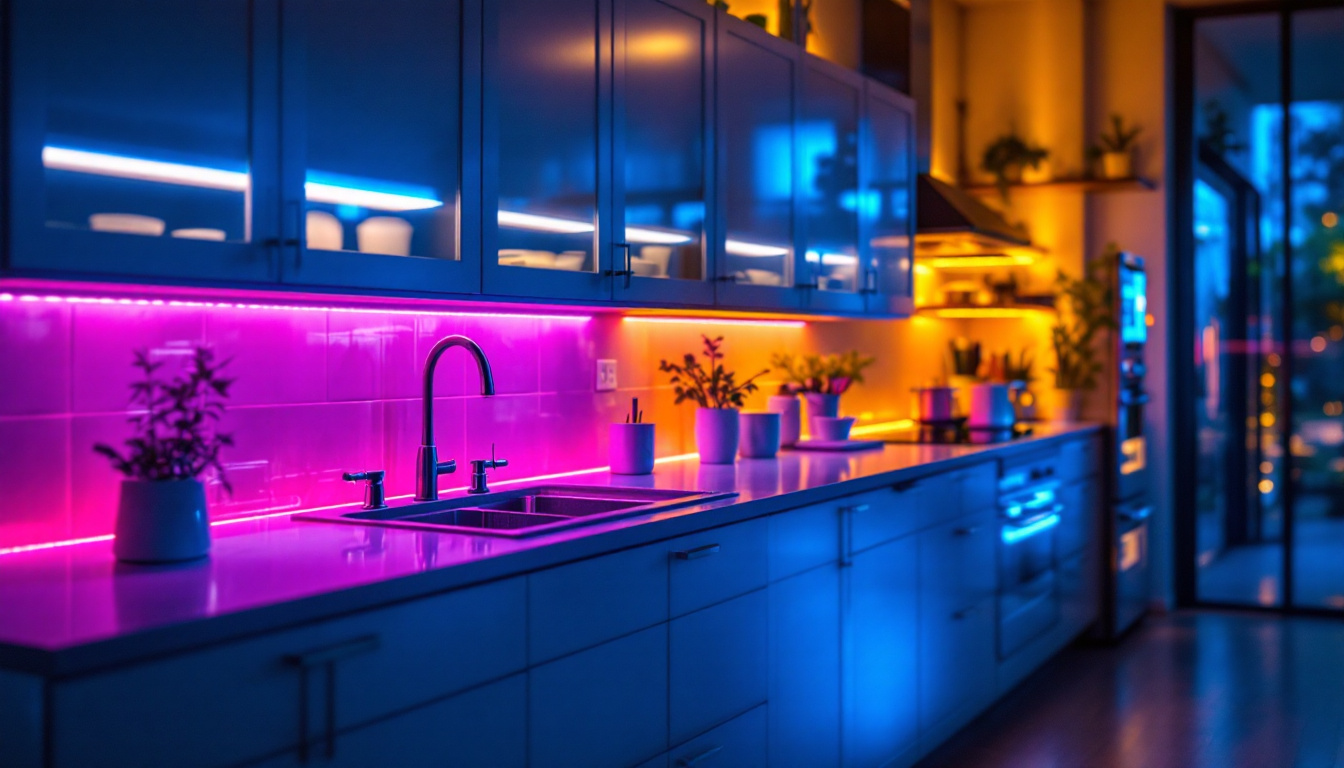
As the demand for effective office lighting continues to grow, lighting contractors play a crucial role in ensuring that workspaces are both functional and aesthetically pleasing. The right lighting can enhance productivity, improve employee well-being, and create a welcoming atmosphere. This article delves into essential tips for lighting contractors to consider when designing and implementing lighting solutions for office environments.
Office lighting is more than just a necessity; it is a critical element that affects the overall workplace environment. Proper lighting can reduce eye strain, enhance focus, and even influence mood. Contractors must recognize that the right lighting design can significantly impact employee performance and satisfaction.
Moreover, with the increasing emphasis on sustainability and energy efficiency, contractors must also consider how to implement lighting solutions that are both effective and environmentally friendly. This dual focus on functionality and sustainability is essential for modern office spaces. Utilizing LED lighting, for instance, not only reduces energy consumption but also has a longer lifespan compared to traditional bulbs, which translates to lower maintenance costs and less frequent replacements. This shift towards sustainable lighting solutions is not just a trend but a necessary adaptation to meet the demands of a more environmentally conscious workforce.
Research has shown that the quality of lighting in an office directly correlates with employee productivity. Poor lighting can lead to fatigue and decreased concentration, while well-designed lighting can boost energy levels and enhance focus. Contractors should aim to create a balance between natural and artificial light, ensuring that employees have access to adequate illumination throughout the day.
Incorporating adjustable lighting options can also empower employees to control their environment, further enhancing their comfort and productivity. This flexibility allows for a more personalized workspace, catering to individual preferences and tasks. For instance, providing task lighting at individual workstations can help employees focus on detailed tasks without straining their eyes, while ambient lighting can create a more relaxed atmosphere during collaborative sessions. Furthermore, the strategic placement of light fixtures can minimize glare on screens, which is crucial in today’s technology-driven workspaces.
Beyond productivity, the health and well-being of employees should be a primary concern for lighting contractors. Studies indicate that exposure to natural light can improve mood and reduce stress levels. Therefore, integrating windows and skylights into office designs can provide significant benefits.
Additionally, contractors should be mindful of the color temperature of artificial lighting. Warmer tones can create a cozy atmosphere, while cooler tones are often associated with alertness and focus. Understanding the psychological effects of different lighting types can help in creating a more conducive work environment. Moreover, incorporating circadian lighting systems that mimic the natural progression of sunlight throughout the day can help regulate employees’ biological clocks, promoting better sleep patterns and overall health. Such systems can adjust automatically based on the time of day, ensuring that the lighting aligns with the natural rhythms of the human body, which is particularly beneficial in offices where employees may work extended hours or in shifts. This holistic approach to lighting not only enhances productivity but also fosters a healthier and more engaged workforce.
When considering lighting solutions for office spaces, contractors should be familiar with various types of lighting and their applications. Each type serves a distinct purpose and can enhance the overall functionality of the workspace.
Ambient lighting is the primary source of illumination in an office. It provides a uniform level of light throughout the space, ensuring that employees can perform tasks without straining their eyes. Common sources of ambient lighting include ceiling-mounted fixtures, recessed lighting, and LED panels.
Contractors should ensure that ambient lighting is evenly distributed to avoid dark spots and harsh shadows. Dimming options can also be beneficial, allowing for adjustments based on the time of day or specific activities.
Task lighting is designed to provide focused illumination for specific activities, such as reading, writing, or using a computer. Desk lamps, under-cabinet lights, and adjustable fixtures are common examples of task lighting.
When selecting task lighting, contractors should consider the needs of individual workstations. Adjustable arms and varying brightness levels can enhance usability and comfort, allowing employees to tailor their lighting to their specific tasks.
Accent lighting serves to highlight specific areas or features within an office, such as artwork, architectural details, or meeting areas. This type of lighting adds depth and character to the workspace, contributing to an inviting atmosphere.
Contractors can use track lighting, wall sconces, or LED strips to create dynamic accent lighting solutions. Careful placement and design can transform an ordinary office into an inspiring environment.
As the focus on sustainability increases, lighting contractors must prioritize energy-efficient solutions. Implementing environmentally friendly lighting options not only reduces operational costs but also aligns with corporate social responsibility initiatives.
LED lights are among the most energy-efficient options available today. They consume significantly less energy compared to traditional incandescent or fluorescent bulbs and have a longer lifespan. By transitioning to LED lighting, contractors can help offices reduce their carbon footprint while also lowering energy bills.
Moreover, LED technology has advanced to offer a wide range of color temperatures and dimming capabilities, making them suitable for various office applications. This versatility allows contractors to design tailored lighting solutions that meet both aesthetic and functional requirements.
Integrating smart lighting systems into office designs is another effective way to enhance energy efficiency. These systems allow for automated control of lighting based on occupancy, time of day, and natural light levels. By using sensors and timers, contractors can help offices minimize energy waste and optimize lighting performance.
Smart lighting can also be programmed to adapt to different tasks or moods, providing a dynamic and responsive lighting environment. This level of customization can significantly enhance employee satisfaction and productivity.
Effective office lighting design requires careful consideration of various factors, including layout, color schemes, and the specific needs of the workspace. Contractors must adopt a holistic approach to ensure that lighting solutions are integrated seamlessly into the overall design.
The layout of the office plays a significant role in determining the type and placement of lighting fixtures. Open-plan offices may require different lighting strategies compared to private offices or meeting rooms. Contractors should assess the spatial dynamics and identify areas that need more illumination, such as collaborative spaces or high-traffic zones.
Additionally, considering the height of ceilings and the placement of furniture can influence the effectiveness of lighting solutions. Properly positioned fixtures can enhance the overall ambiance while ensuring that employees have adequate lighting for their tasks.
The color and finish of walls, furniture, and fixtures can significantly impact how light is perceived in an office. Lighter colors tend to reflect light, creating a brighter atmosphere, while darker colors can absorb light and create a more subdued environment. Contractors should collaborate with interior designers to select color palettes that complement the lighting design.
Furthermore, finishes such as matte or glossy surfaces can affect light distribution and glare. Understanding these nuances can help contractors create a balanced and visually appealing workspace.
Lighting contractors must stay informed about relevant regulations and standards that govern office lighting. Compliance with these guidelines ensures that lighting solutions are safe, effective, and suitable for the intended environment.
Each region may have specific building codes and safety standards that dictate the minimum requirements for office lighting. Contractors should familiarize themselves with these regulations to ensure that their designs meet or exceed the necessary criteria.
Incorporating safety features, such as emergency lighting and adequate exit signage, is also essential. These elements not only comply with regulations but also enhance the safety and security of the office environment.
Accessibility is a critical aspect of office design, and lighting contractors must ensure that their solutions accommodate individuals with varying needs. This includes providing adequate lighting for visually impaired employees and ensuring that lighting controls are easily accessible.
By prioritizing accessibility, contractors can create inclusive workspaces that promote equality and enhance the overall employee experience.
The world of office lighting is constantly evolving, with new technologies and trends emerging regularly. Staying abreast of these developments can help lighting contractors remain competitive and deliver innovative solutions to their clients.
Human-centric lighting focuses on aligning artificial lighting with the natural circadian rhythms of employees. This approach aims to mimic the effects of natural light, promoting well-being and productivity. Contractors can implement dynamic lighting systems that adjust color temperature and intensity throughout the day, supporting the natural biological clock of workers.
By prioritizing human-centric lighting, contractors can create environments that not only look good but also enhance the overall health and performance of employees.
Biophilic design emphasizes the connection between humans and nature, and it is increasingly influencing office lighting strategies. Incorporating elements such as natural materials, plant life, and views of the outdoors can enhance the overall lighting experience.
Contractors can explore ways to integrate biophilic principles into their lighting designs, creating spaces that foster creativity, reduce stress, and improve overall well-being.
Lighting contractors play a pivotal role in shaping the office environment through effective lighting solutions. By understanding the importance of office lighting, exploring various types of lighting, prioritizing energy efficiency, and staying informed about industry trends, contractors can create spaces that enhance productivity, well-being, and overall satisfaction.
As the landscape of office design continues to evolve, embracing innovation and sustainability will be key to meeting the needs of modern workplaces. By implementing these key tips, lighting contractors can ensure that their projects not only meet client expectations but also contribute to a brighter, more efficient future for office environments.
Ready to enhance your office lighting projects with the best in spec-grade lighting products? At LumenWholesale, we provide lighting contractors with an unbeatable combination of quality, affordability, and convenience. Say goodbye to middleman markups and hello to a vast selection of top-quality lighting solutions that meet the highest industry standards. With free shipping on bulk orders, you can trust that you’re getting premium lighting at the best value, every time. Elevate your lighting projects and experience the difference with Wholesale Lighting at the Best Value from LumenWholesale.

Discover the transformative impact of under-the-counter LED lights on the lighting industry.

Discover everything lighting contractors need to know about electricity light switches in this comprehensive guide.

Discover the advantages and drawbacks of outside solar lights for yards, tailored specifically for lighting contractors.

Discover how LED strip lights under cabinets are revolutionizing lighting contractors’ projects by enhancing aesthetics, improving energy efficiency, and offering versatile design options.